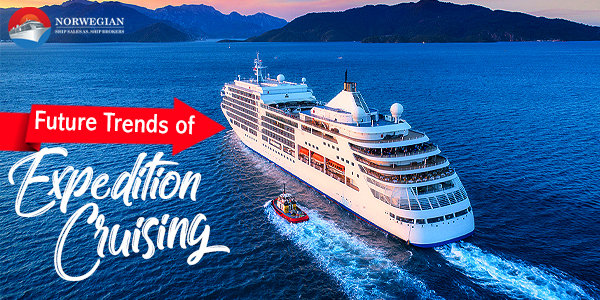Expedition cruising is a small segment within the cruise industry that is witnessing a rapid growth phase. In the cruise shipping industry, three types of ships are available, the luxury cruise vessels, expedition cruise vessels, and the small cruise vessels. The vessels are differentiated depending on their gross tonnage. The small cruise vessel has a space of not more than 30,000 gross tons whereas the luxury vessels are now well over 30,000 gross tons.
In most of the small cruise vessels, one can find features of expedition vessels in the way they operate. The difference lies in the extent of availability of these features like onboard entertainment, dining, wining, sunbathing, and shore excursions. The luxury cruise vessels also have expedition features as well. However, the focus here is more on vessels that are no more than 30,000 gross tons.
In the next five years, the expedition fleet is going to see big change with huge capital investment in this sector. This will likely to increase the existing ticket prices even further.
Distinctive Business Structure
In the cruise segment, it is the cruise lines that mostly own the assets, take care of marketing and product development, and have in-house operations of everything that has to do with hotel and technical operations. There are some lines that have outsourced certain sections to third-party specialists like ship management.
Operators in the expedition segment often charter in ships from tonnage providers. In most of the cases, the charter periods are not long, and are often for a single season at a time. There is likely to be more business integration in the future, as the value of future assets will be extremely valuable compared to those of today. There is much flexibility to the brands, thanks to the charter model that has helped many not so financially strong companies run successful expedition cruise businesses. Hence, the future trends of the industry might be very different from that existing today, and is likely to very similar to that of the mainstream cruise business model.
Operational Waters
Although the expedition vessels are operational all over the world, the routes however are not the same as those of the mainstream cruise liners. The routes they follow are those that are of expedition interests. The primary routes of interests include:
- The Antarctica
- Northern Polar Regions
- Galapagos Islands
- South Pacific
The duration of expedition cruise seasons are short, more so in the Polar regions. In the southern hemisphere, the seasons in the Antarctic water expedition is from June to October. These expeditions are undertaken in ships that can sail in ice. The usual time for operating these ice capable ships are the Northern Hemisphere summer in the Arctic water and the Austral summer in the Antarctic waters. As there are long transit voyages involved to deploys the same ships in both the regions, very few ships partake this journey as the time needed would be too long for two long transits every year. However, due to low popularity of these positioning cruises, the prices are usually lower compared to those of regular expedition cruises.
What the Future Holds
The cruise business is experiencing an improved growth the world over, and the future looks optimistic. Growth in this industry will continue, though it will vary from region to region. The expedition cruising segment is expected to witness the same trend. With an increase in the number of wealthy people around the world, the business continues on sound footing as more and more wealthy people are looking for newer ways of adventure to indulge.
Conclusion
Norwegian ship sales as is a leading cruise and ferries brokering company involved in cruise vessels for sale for almost two decades. The company also serves the shipping market with sale and purchase of brokerage of roro vessels and ferries.


